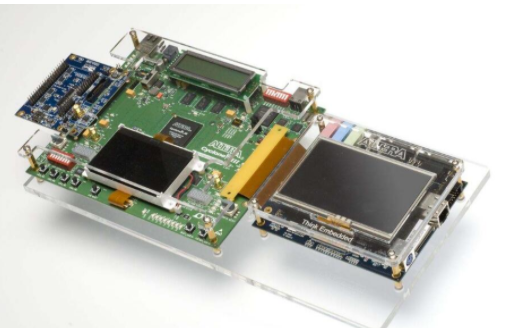development mode
●MCU development is mostly bare metal, the program size is small, and it is mostly developed independently by a single programmer. Some complex products also use high-end microcontrollers such as STM32 and RTOS (uCOS, freeRTOS, etc.).
●Embedded development is almost entirely based on embedded operating systems, and the most commonly used ones are Linux and Android.
Technical characteristics 1
●Programming language: The microcontroller mainly uses C language (with a small amount of assembly), which is slightly different from standard C. Advanced features of C language such as structures and function pointers are rarely used. Embedded development is more complex and is generally divided into the bottom layer and the application layer. The bottom layer uses C language, and the application layer uses C, C, Java and other languages. Embedded C language uses more advanced features such as structures, data structures, algorithms, and function pointers (used to implement object-oriented).

The difference between embedded development and microcontroller development
1. The difference in system structure between microcontroller and embedded system:
1) Basic structure of microcontroller
The microcontroller is composed of arithmetic unit, controller, memory, and input and output devices.
2) Embedded system components
Les systèmes embarqués se composent généralement de microprocesseurs embarqués, de périphériques, de systèmes d'exploitation embarqués et d'applications spécifiques.
The first step in embedded system design is to combine the specific application, comprehensively consider the system’s requirements for cost, performance, scalability, development cycle and other aspects, determine the main control device of the system, and build the system hardware with it as the core platform.
2. The difference in hardware composition between microcontroller and embedded
A microcontroller is an integrated circuit chip that contains a microcontroller circuit and some general input and output interface devices. From the perspective of the way an embedded system is constructed, according to the development level of modern electronic technology, the embedded system can be implemented using a single-chip microcomputer or other programmable electronic devices. The remaining hardware components are determined according to the requirements of the target application system.
3. Differences in software composition between microcontrollers and embedded systems
There is no application program in the general-purpose microcontroller shipped by the manufacturer, so it cannot be run directly. After adding the application program, the microcontroller can run independently. Embedded systems must have control software. The way to implement control logic can be entirely using hardware circuits or software programs.
4. Differences in primary and secondary relationships between microcontrollers and embedded systems
Microcontrollers are now considered general-purpose electronic devices, with the microcontroller itself as the main body. Embedded systems are subordinate in terms of physical structure, and embedded systems are embedded and installed in the target application system. The embedded system is dominant in the control relationship and is a logical processing system that controls the operation of the target application system. Although an embedded system can be constructed in different ways, once constructed, an embedded system is a dedicated system. In a dedicated system, the software of the programmable device can be implanted during the system construction process or directly generated during the device manufacturing process to reduce manufacturing costs. Microcontrollers with complex control logic require operating system software support; embedded systems with simple control logic do not need operating system software support.
Introduction to microcontroller
What is a microcontroller? Generally, we refer to single-chip microcomputers as microcontrollers for short. It is not a chip that completes a certain logical function, but integrates a computer system onto a chip. It is equivalent to a microcomputer. Compared with a computer, a microcontroller only lacks I/O devices. It is a typical embedded microcontroller.
Characteristics of microcontroller
1) Small size, relatively simple structure and high reliability
The microcontroller integrates various functional components on one chip and adopts a bus structure internally, which reduces the connections between the chips and greatly improves the reliability and anti-interference ability of the microcontroller. In addition, its small size makes it easy to take shielding measures for strong magnetic field environments, making it suitable for working in harsh environments.
2) Strong control ability
Although the structure of the single-chip microcomputer is relatively simple, it is “complete” and has sufficient control functions. The microcontroller has a large number of I/O ports. The CPU can directly perform related operations, arithmetic operations, logical operations and bit operations on the I/O. The instructions are simple and rich. Therefore, the microcontroller is also a “control-oriented” computer.
3) Low voltage, low power consumption
Microcontrollers can operate at a voltage of 2.2V, and some can already operate at 1.2V or 0.9V; the power consumption is reduced to μA level, and a button battery can be used for a long time.
4) Excellent performance/price ratio
Since the hardware structure composed of single-chip microcomputers is relatively simple, the development cycle is short, the control function is strong, and the reliability is high, therefore, under the conditions of achieving the same functions, the control management system developed with single-chip microcomputer is better than the control management system developed with other types of microcomputers. Systems are cheaper.